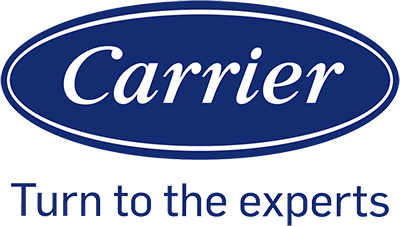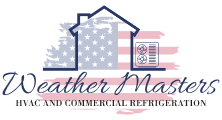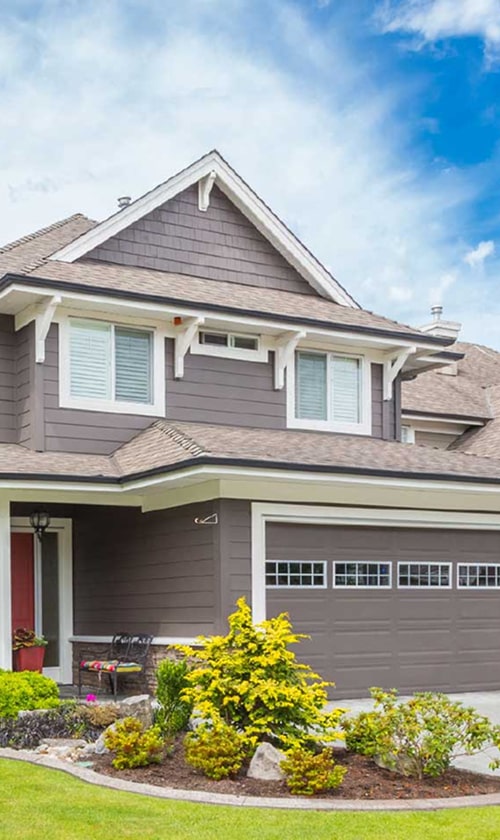When we think about keeping our homes comfortable, we often focus on the thermostat or the age of our HVAC system. What we may overlook are the air ducts that move heated or cooled air through the house. Dirty ducts force the system to work harder, which lowers efficiency and raises energy costs.
Dust, debris, and buildup inside ducts restrict airflow and make it harder for the system to maintain the right temperature. This not only wastes energy but also puts extra strain on the equipment, which can shorten its lifespan. Clean ducts help the system run smoothly and keep utility bills under control.
We also need to consider how dirty ducts affect the air we breathe. Particles that collect in the system can circulate through the home, lowering indoor air quality and causing discomfort. By understanding the signs of dirty ducts and how cleaning improves efficiency, we can take simple steps to protect both our comfort and our HVAC system.
How Dirty Ducts Reduce HVAC System Efficiency

Dirty ducts affect how well our HVAC system works by slowing down airflow, forcing the system to use more energy, and putting extra strain on key components. These issues lead to less effective heating and cooling, higher energy costs, and more wear on the equipment.
Restricted Airflow and Reduced HVAC Performance
When dust, dirt, and debris build up inside the ductwork, airflow becomes restricted. Reduced airflow means the HVAC system cannot move heated or cooled air efficiently through the home. Rooms may feel uneven in temperature, with some areas being too warm while others remain too cold.
The blower motor has to work harder to push air through clogged ducts. This extra effort reduces efficiency and makes the system less responsive. As airflow decreases, the system runs longer cycles to reach the set temperature, which wastes both time and energy.
We also notice weaker air pressure from vents, which directly affects comfort. Restricted airflow not only lowers performance but also prevents the system from maintaining consistent indoor conditions.
Increased Energy Consumption and Higher Energy Bills
Dirty ducts cause the HVAC system to use more energy than necessary. When airflow is blocked, the system compensates by running longer and cycling more often. This increases energy consumption and directly leads to higher energy bills.
For example, if airflow is reduced by 20%, the system may need to run significantly longer to achieve the same level of heating or cooling. That extended runtime drives up monthly energy costs.
We pay more for less comfort when ducts stay dirty. The harder the system works, the more electricity or fuel it consumes. Over time, even small increases in consumption add up to noticeable increases in household expenses.
Premature Wear of HVAC Components
Restricted airflow and longer runtimes place extra strain on key HVAC components. The blower motor, for example, must work harder to push air through dirty ducts. This added stress shortens its lifespan and increases the chance of breakdowns.
Other parts, such as coils and filters, also experience more wear. Dust and debris can collect on these surfaces, reducing their efficiency and forcing the system to overwork.
When components wear out faster, we face more frequent repairs and higher maintenance costs. In some cases, premature wear may even shorten the overall life of the HVAC system, making replacement necessary sooner than expected.
Effects of Dirty Air Ducts on Indoor Air Quality

When air ducts collect dust, debris, and moisture, the air that moves through them carries these particles into our living spaces. This can lower indoor air quality, create unpleasant odors, and increase the risk of breathing problems.
Spread of Dust and Allergens
Dust and allergens build up inside dirty air ducts and get pushed into rooms whenever the HVAC system runs. This means we may notice more dust settling on furniture, floors, and surfaces even after cleaning.
Common allergens such as pollen, pet dander, and dust mites can also circulate more freely. For people with allergies, this can lead to more sneezing, itchy eyes, and discomfort indoors.
The constant movement of these particles makes it harder to maintain clean air. Even with regular vacuuming and dusting, the source of the problem remains inside the ductwork.
Key effects of dust and allergens include:
- Faster buildup of dust in living areas
- More allergy symptoms for sensitive individuals
- Reduced comfort and cleanliness indoors
Circulation of Mold Spores and Musty Odors
Moisture inside air ducts encourages mold growth. When mold develops, spores spread through the airflow and enter the rooms we use every day. This often leads to musty odors that linger and are difficult to remove.
The smell is not just unpleasant but also a sign of hidden growth. Mold spores can trigger issues for people with asthma or weakened immune systems.
Once mold establishes inside ductwork, it can continue to release spores until the ducts are cleaned or treated. Using air fresheners may mask the odor but will not solve the problem.
Signs of mold-related duct issues:
- Persistent musty smell in multiple rooms
- Black or green spots near vents
- Increased humidity or condensation around ducts
Health Risks and Respiratory Issues
Dirty air ducts can worsen breathing problems by pushing dust, allergens, and mold spores into the air we breathe. People with asthma, bronchitis, or other respiratory conditions often notice stronger symptoms.
Children and older adults are especially sensitive to poor indoor air quality. They may experience coughing, wheezing, or difficulty breathing when ducts are not clean.
Even those without pre-existing conditions can feel the effects. Prolonged exposure to airborne contaminants may lead to throat irritation, headaches, or sinus problems.
Possible health impacts include:
- More frequent asthma attacks
- Irritated airways and sinuses
- Greater risk of respiratory infections
Signs of Dirty Ducts and Reduced HVAC Efficiency
When our air ducts collect dust and debris, the system struggles to move air properly. This can lead to uneven temperatures, more dust inside the home, and noticeable odors that affect comfort and health.
Uneven Heating and Cooling
Dirty ducts restrict airflow, which makes some rooms feel warmer or cooler than others. When air cannot move freely, the HVAC system cannot distribute heating and cooling evenly across the house.
We may notice certain rooms staying stuffy in summer while others remain chilly in winter. This uneven performance forces the system to run longer, which increases energy use and puts extra strain on the equipment.
Common signs include:
- Hot or csold spot in the same home
- Longer run times for the system to reach set temperatures
- Higher utility bills without a change in thermostat settings
When airflow remains blocked by dust, the comfort level drops and the system’s efficiency decreases.
Visible Dust and Increased Household Dust
Excess dust around vents or on furniture often points to dirty ducts. When dust builds up inside the air ducts, it circulates through the home every time the system runs.
We may see fine layers of dust gathering quickly on surfaces even after cleaning. In some cases, dust may blow out of supply vents when the system starts.
Key things to watch for:
- Dust streaks around vent covers
- Frequent dusting needed to keep surfaces clean
- Clogged air filters that fill faster than usual
This buildup not only affects indoor air quality but also reduces airflow. As dust collects, the HVAC system has to work harder, which lowers efficiency and shortens the life of components.
Unusual Odors and Allergy Symptoms
Musty odors coming from vents often signal dirty ducts. Dust, pet dander, and moisture inside ducts can create smells that spread through the home when the system runs.
We may also notice an increase in allergy symptoms such as sneezing, coughing, or itchy eyes. Dirty ducts can circulate allergens like pollen, mold spores, and pet hair, which affect sensitive individuals.
Important indicators include:
- Persistent musty odors when the system is running
- Worsening allergy symptoms indoors compared to outdoors
- Odors stronger near vents or return registers
When odors and allergens move through the air ducts, both comfort and health are impacted. This is a clear sign the system is not running at its best.
Improving HVAC Efficiency Through Air Duct Cleaning
Clean air ducts help our HVAC system move air more easily, reduce wasted energy, and keep indoor air quality stable. Regular cleaning and filter maintenance also lower strain on system parts, which helps control energy costs and extend equipment life.
Benefits of Professional Air Duct Cleaning
When we hire trained technicians for air duct cleaning, they use equipment that removes dust, debris, and buildup from inside the ducts. This process clears blockages that often force the HVAC system to work harder than needed.
Cleaner ducts improve airflow throughout the home or building. Better airflow means the system can heat or cool spaces more evenly, which increases comfort and reduces wasted energy.
Professional cleaning also helps reduce allergens such as dust and pet dander that settle inside ductwork. While the main goal is to improve HVAC efficiency, cleaner ducts can also create a healthier indoor environment.
We should note that the frequency of cleaning depends on factors like home size, pets, and local air quality. A professional inspection can help us decide the right schedule.
Role of Air Filters in Maintaining Clean Ducts
Air filters play a direct role in keeping ducts clean and protecting HVAC performance. A clogged or dirty filter allows dust and particles to pass into the duct system, which reduces efficiency and increases strain on the blower motor.
We should replace or clean filters on a regular schedule. Most homes need a filter change every 1-3 months, but this varies by filter type and household conditions. High-efficiency filters capture smaller particles but may need more frequent checks.
By keeping filters in good condition, we reduce the amount of debris that enters ducts. This lowers the need for frequent duct cleaning and helps the system maintain steady airflow.
Simple steps like marking filter change dates or setting reminders can prevent overlooked maintenance. Consistent filter care is one of the easiest ways to protect both ducts and HVAC efficiency.
Long-Term Savings and System Longevity
Air duct cleaning and proper filter maintenance reduce the workload on the HVAC system. Less strain means fewer breakdowns, lower repair costs, and a longer service life for major components like the blower and compressor.
Lower energy bills are another benefit. When airflow is clear and filters are clean, the system uses less electricity or fuel to reach the set temperature. This efficiency translates into measurable savings over time.
We also avoid the hidden costs of neglect, such as uneven heating or cooling that leads to higher thermostat settings. By investing in regular cleaning and filter care, we make the system more reliable and cost-effective.
In the long run, these steps protect both our comfort and our budget by keeping HVAC performance steady and energy costs under control.




